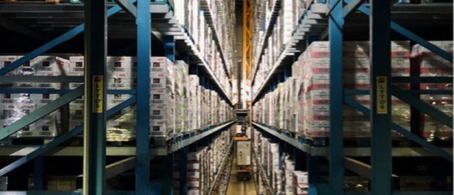-
BLACKOUT TECHNOLOGIES TARGETS TELEMATICS-INTEGRATED MOBILE DEVICE BLOCKING TO COMBAT SMARTPHONE DISTRACTION - April 1, 2025
-
OpenADR Alliance announces first OpenADR 3.0 certified products with EVoke Systems, E.ON Energy and Universal Devices - March 25, 2025
-
Growing fulfilment and contract packer appoints new Managing Director - March 25, 2025
-
When is it time to invest in a WMS? Understanding the key trigger points - March 25, 2025
-
eCapital helps Vantage Recruitment on its journey to financial success - March 24, 2025
-
Hugo Beck Celebrates 70 Years of Packaging Innovation with Open House Events - March 20, 2025
-
PROLOG FULFILMENT SUPPORTS LUNA DAILY’S COMMITMENT TO BETTER BODY CARE FOR ALL WOMEN - March 19, 2025
-
Motion Ventures launches largest-ever maritime tech fund at $100M to meet the industry’s new pace of adoption - March 18, 2025
-
ITD GLOBAL APPOINTS GROUP CHIEF REVENUE OFFICER - March 17, 2025
-
SURECAM TEAMS UP WITH ENTERPRISE FLEX-E-RENT FOR VEHICLE REPAIR & MAINTENANCE CONFERENCE - March 14, 2025
Have you ever stopped to consider why logistics workers are so inclined to job hop these days? As high street only retailers and traditional businesses continue to suffer, online commerce in all its forms is booming, it now represents nearly 40% of all sales. This has led to a surge in demand for both warehouse space and logistics workers, resulting in wages rising and newly increased expectations among would be employees about the working conditions in a warehouse.
Gone are the days when warehouse operatives would put up with a harsh, demanding environment, unrealistic targets and difficult bosses. Now, post Brexit, many people who used to work in the warehouse are no longer willing or available to do so. The pool of potential employees that is left have become part of the ‘Great Resignation’ – a new movement of people voting with their feet and getting themselves better, more lucrative and satisfying jobs
According to research from Randstad UK, 69% of all UK employees feel confident about moving to a new job in the next couple of months, with this figure rising to 74% among industries like manufacturing and logistics. It’s not just manual workers that want to move on, a survey by Microsoft among 30,000 of their global employees revealed that 41% were considering quitting or changing professions this year.
The problem in the logistics and warehousing sector is its poor reputation for harsh working environments, low pay and monotony. Employers in these industries need to consider how they can make improvements to attract the necessary workers to satisfy demand. Professor’s Gibson and Ishfaq from Auburn University in the US emphasise this point, highlighting that due to widespread negative perceptions of physically demanding and repetitive work, night and weekend shifts and limited wage growth, logistics is facing a critical hiring and retention crisis. In the short term, poorly staffed facilities may struggle to keep up with demand, face costly overtime bills and end up with quality issues and safety problems. More significant in the long term is that high staff turnover leads to a loss of expertise. But with the right software, a solution can quickly be found.
By introducing technology and automation, warehouse leadership can eliminate many of these difficulties. Their warehouses and DCs can be transformed into a much safer and more pleasant places to work. Supported by mobile technology, pickers and packers are able to work more efficiently and ergonomically, using hand-held or wearable devices. Software like a warehouse management system (WMS) further enhances operations, giving workers the chance to over-achieve against KPIs by directing them to the most efficient pick routes and taking the guess work out of routine operations.
The problem highlighted by Gibson and Ishfaq can also be managed by introducing a WMS, because the software controls how the warehouse is operated, taking much of the decision making away from operatives. Instead, processes are standardised and key workflows to complete core tasks are automated. Workers are guided through each stage, with built in quality controls. New generation WMS solutions are also designed to be implemented very rapidly with minimal business interruption, meaning that these problems can be addressed before the situation becomes critical.
In addition to investing in WMS technology, today’s warehouse workers also expect similar perks to those offered to white collar workers. We haven’t reached the same scale as the IT industry, with pool tables and power nap pods, but change is coming. Many warehouses are now offering their workers free gym memberships, decent coffee machines and canteen facilities, bike to work schemes and nice places to relax during break times.
Those forward-thinking logistics companies that have introduced these changes and are now seeing early rewards in the form of improved employee loyalty. For instance, Prologis have described this change in mindset by highlighting that the traditional 7 R’s of logistics – right product in the right place, at the right time, delivered to the right person in the right condition within the right timeframe and for the right cost needs to be expanded. Now, they argue, we need to be considering the right people too, if we want the supply chain to happen. We couldn’t agree more but believe that in addition to people there needs to be another, 9th R adding into the mix – right technology – and implementing a WMS is a great place to start.
Author: Eric Carter, Solutions Architect at Indigo Software

































